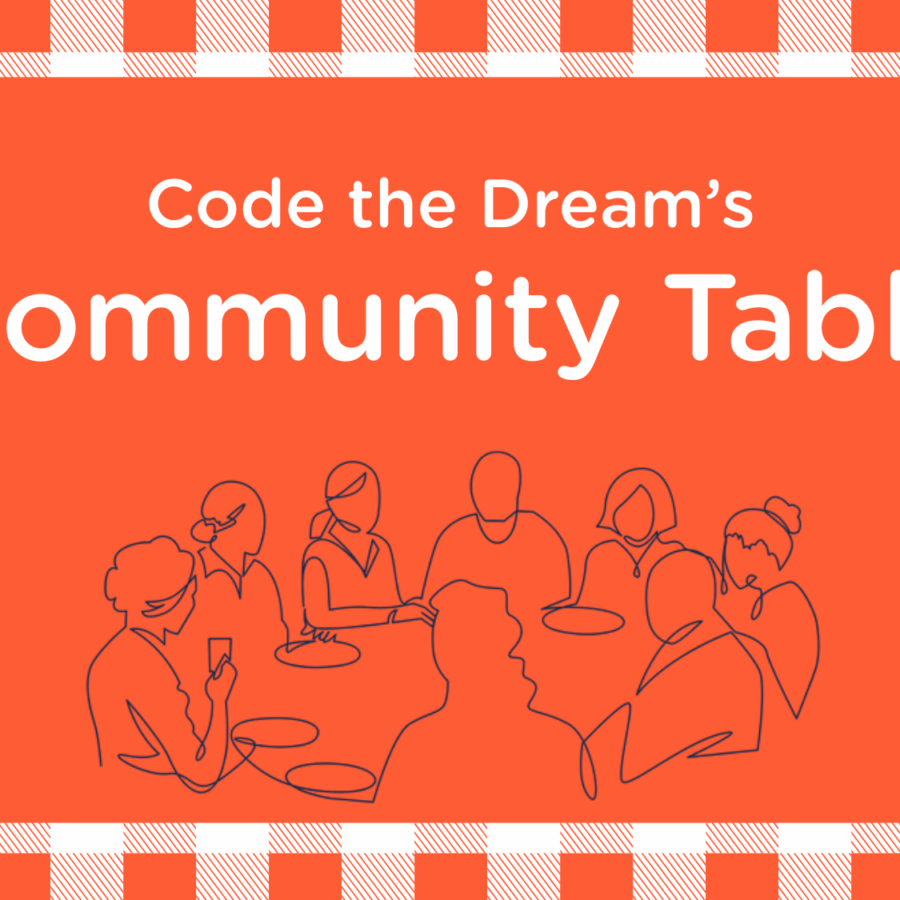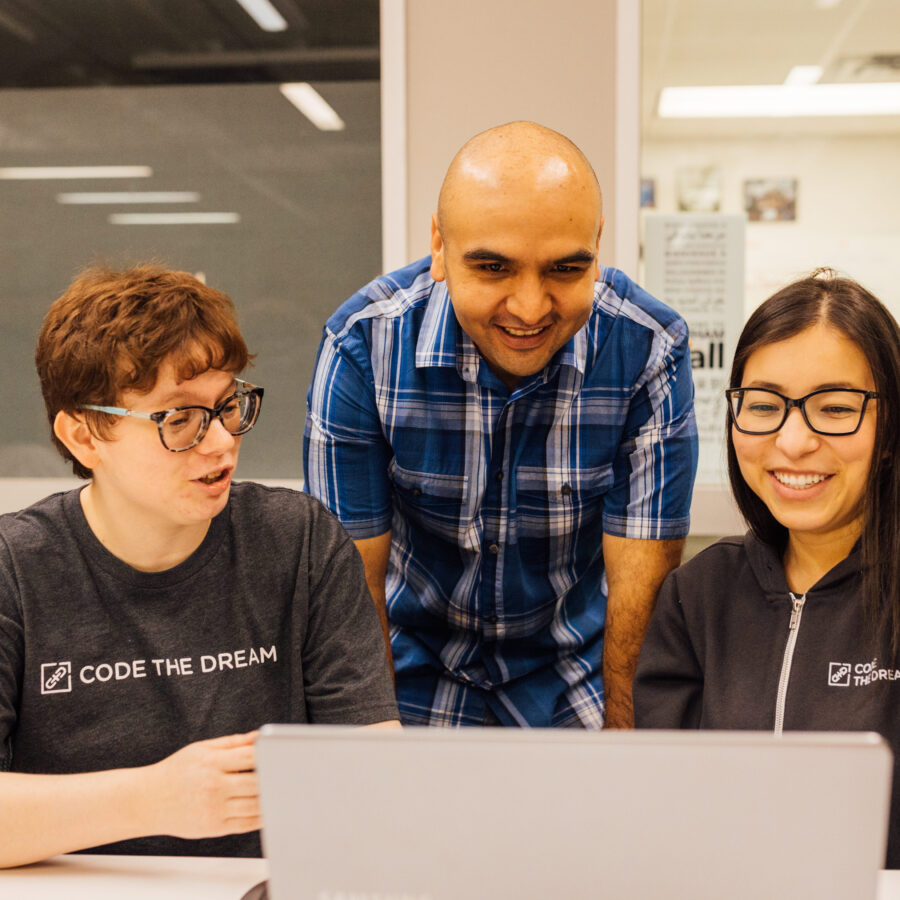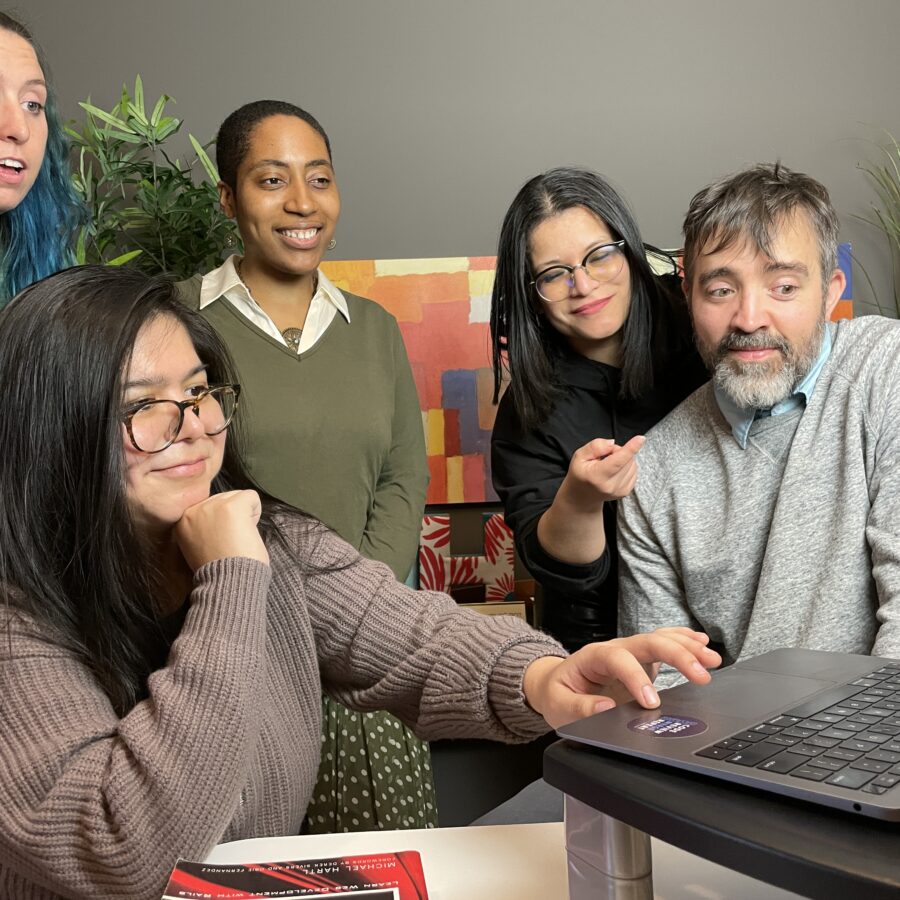It was two days to launch day, and we had just decided on some last-minute improvements to the app. We had only recently finalized its name. Mariposa AR, as we decided to call it, was one of the most unique projects we had done yet, and the coming launch day brought waves of excitement and trepidation over the Code the Dream office. Thought up as a partnership between Code the Dream and the North Carolina Museum of Art and commissioned by Google Fiber, Mariposa AR is an augmented reality app that allows users to virtually experience the museum’s Frida Kahlo and Diego Rivera exhibits through two murals in downtown Durham.
The design process hinged on one simple idea: let people experience the Frida Kahlo and Diego River exhibits even when they were no longer at the North Carolina Museum of Art. To do this, the app would use augmented reality to open a “portal” to the exhibit and allow users to virtually walk around inside. Code the Dream had never made an AR app before, but we jumped at the chance to something this cool.
Now, though, I was worried. The developers – Irene, Jorge, and Tom – were working through the long weekend to make sure that it was ready, and I was drafting a social media plan for launch day while mentally running through all the ways the app could break. Sometimes the portals spawned too high for the user to reach, or so low they would have to crawl to get through to the museum. Sometimes parts of the AR experience didn’t load, and the app seemed to have issues on older phones. But launch day was coming, whether we were ready or not.
On the morning of launch day, I woke up early to walk downtown and do some last-minute tests of the app. It was bitterly cold; January had finally arrived in Durham.
The murals, located on E. Chapel Hill Street, were painted by Cecilia Lueza and Cornelio Campos and inspired by Frida Kahlo and Diego Rivera’s works. Lueza’s “I Am My Own Muse,” in particular, always held my attention. I remember the first time I saw it – the vibrant colors caught my eye, and something about the way that Kahlo looks confidently upward filled me with hope. I was enthralled immediately.
But standing in front of the murals the frigid morning of Mariposa AR’s launch, I felt intimidated. My co-worker Crystal was having trouble getting the portals to appear, and the app seemed to have trouble with older phones. We trudged back to the CTD office at American Underground, where a few staff were planning out the day.
By 9:00, more CTD staff and interns were arriving at American Underground. We discovered that Mariposa AR works when the image of the Frida murals is projected and not just at the site of the murals, so we soon had the murals projected on the wall of the AU’s Bullpen as a growing throng of people wielding smartphones ducked around each other to get to the portals popping up on their screens. For a moment we thought about holding the event inside the AU to keep everyone out of the cold, but it was not as powerful when the murals projected rather than towering over you on the walls of the Durham Convention Center.
We bundled up and shuffled back out into the cold, the clump of us that walked the short distance from the AU to the murals resembling a group of excited school kids more than professional tech startup employees.
At the murals, we did some final testing of the app and waited for our partners to arrive. While I was waiting, I looked through the migration stories section of Mariposa AR, which asks users to input their family story and displays that story in a butterfly icon on a map of the world. The range of voices found in the stories is fascinating; one person writes of their family’s long history in Cary, NC, while another’s story is profound in its simplicity: “Swam rivers and crossed borders to get here.”
As the partners arrived, my phone buzzed continually with notifications from social media as more people started to talk about the app. The stars of the show were Irene and Jorge. They took partners on tour of the app and spoke with local media outlets who wanted to do pieces on the app (see their stories here, here, and here). Lori, our Director of Partnerships, even started pulling random people off the street to try out the app. Soon, there was a crowd of people around the murals, drawing even more attention from passers-by as people hopped around each other to find the portals, swapped phones, and took screenshots of the art in the museum.
As I looked around the group, I saw the immediate impact of Mariposa AR. Code the Dream staff and interns were mingling with media and the people who had stopped by to try the app, sharing our story with people who had never heard of us before. Dan and Lori were talking with someone from the City of Durham about more collaboration opportunities. People were finding new ways to engage with art. Downtown Durham was more dynamic as a result of the app, promising unique ways for people to be a part of their city. And perhaps most importantly, immigrants and their stories were being celebrated, both by the app and by the media, who noted that both Irene and Jorge came to the United States from Mexico.
I took one last journey to the artificial reality exhibit before heading back to the AU. Someone excitedly pointed out that virtual butterflies were gathering around “Juchari Ziranhua/Nuestros Raices/Our Roots,” representing the kaleidoscope of stories that each person in Durham brings to the city.
Mariposa AR’s launch day reminded us of our connections to art, to our city, and to each other. I’ll call it a success.





